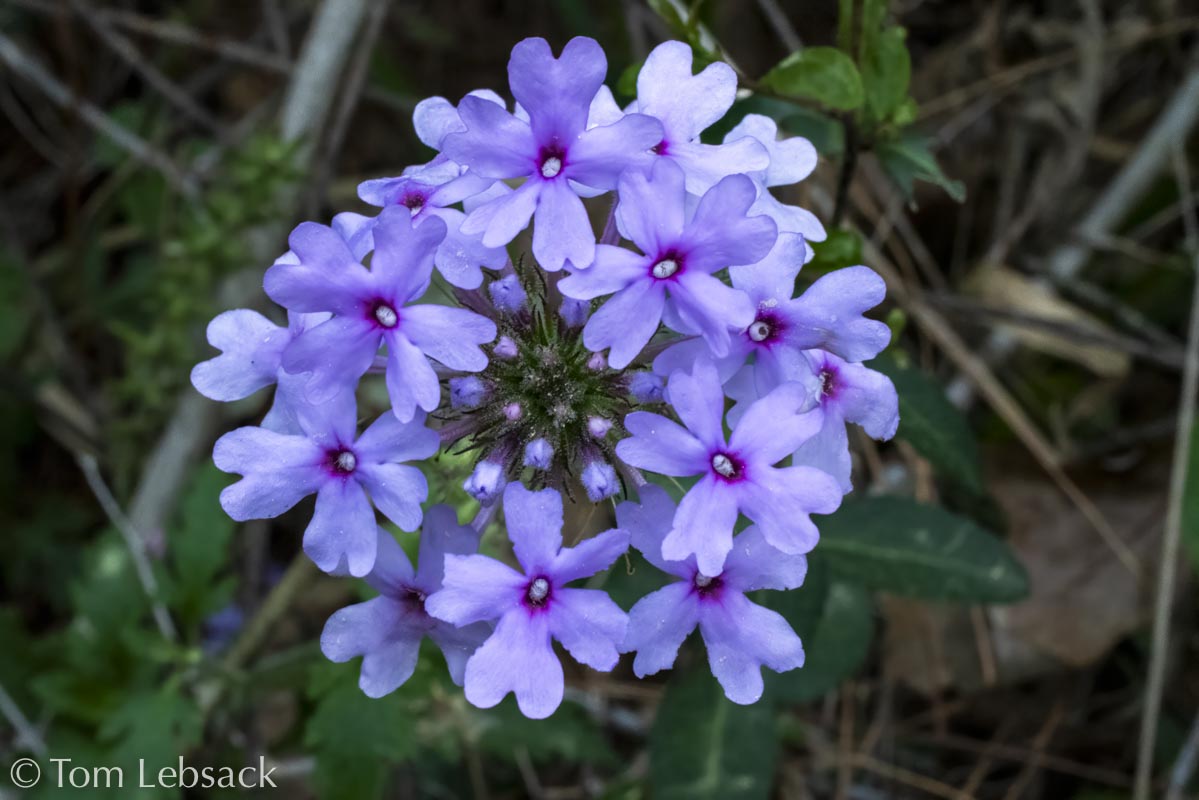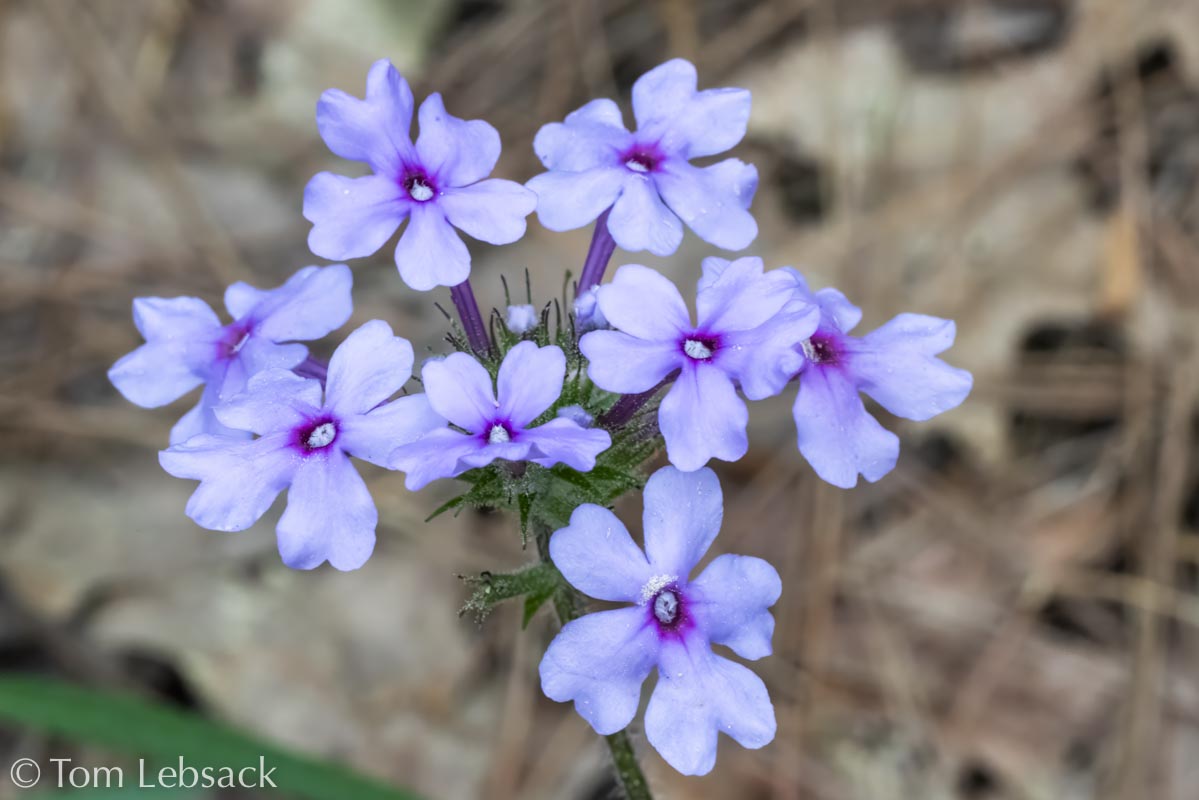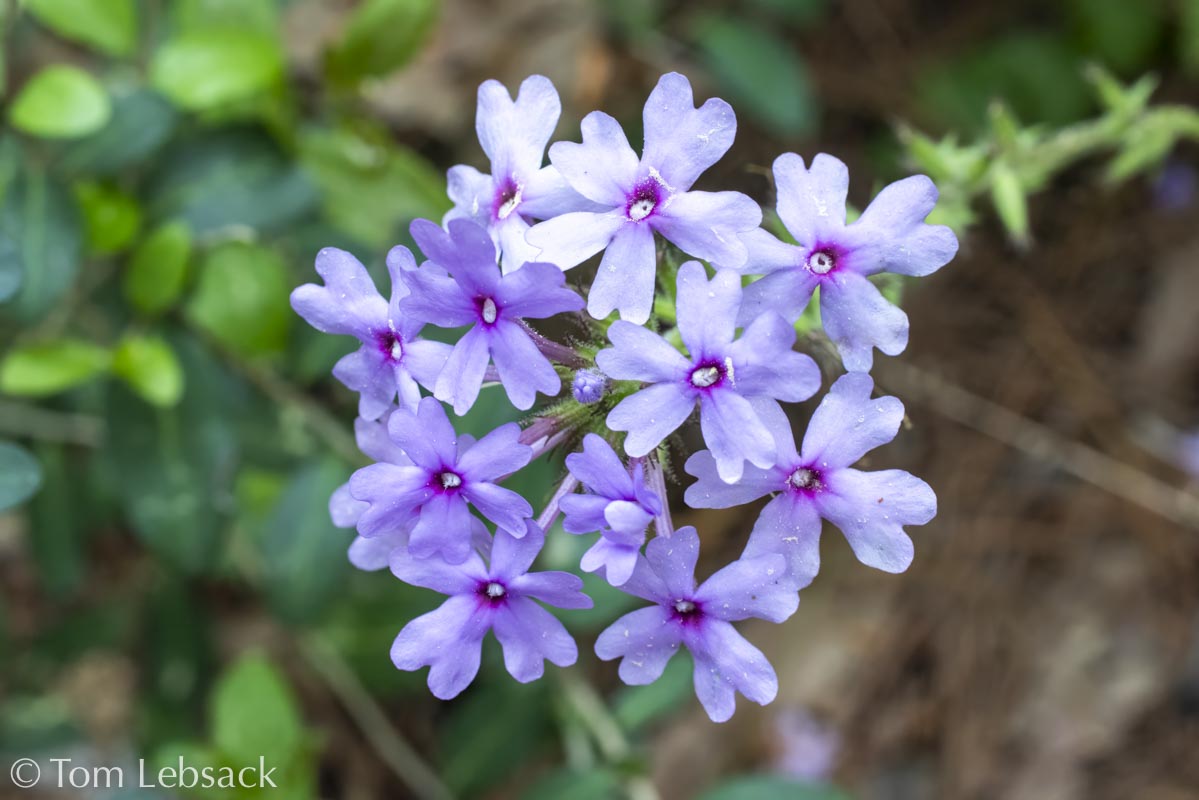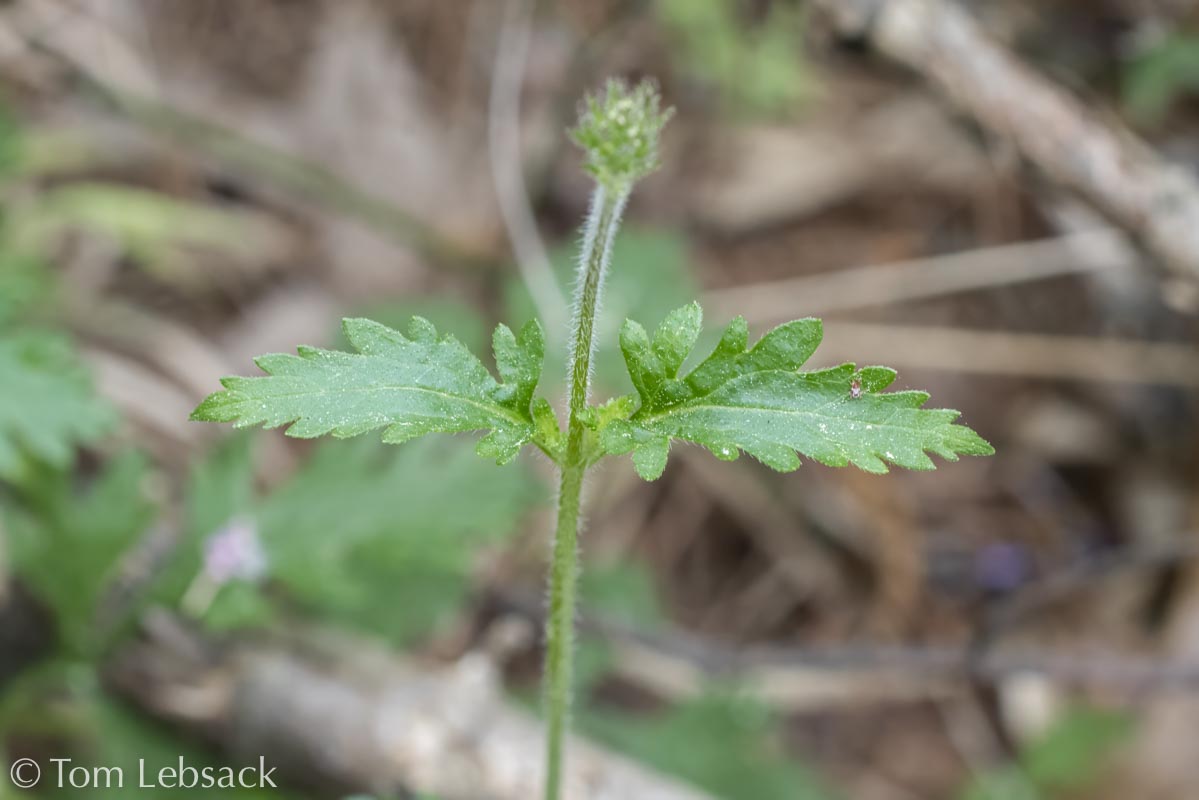Texas Wildbuds
Glandularia canadensis
(Rose Mock Vervain)
| Scientific Name | Glandularia canadenis (Verbena canadensis) | USDA PLANTS Symbol | GLCA2 |
| Common Name | Rose Mock Vervain, Rose Verbena | ITIS Taxonomic Serial No. | 502784 |
| Family | Verbenaceae (Verbena) | SEINet Reference |
Click Here |
| Description | Habitat: Moist to dry, sandy or rocky soils in open areas, prairies, woodland openings, pastures, abandoned fields, and roadsides. Plant: Mat-forming perennial with stems that are up to 24 inches long and ascending or creeping with ascending tips; multiple stems from the base, rooting at lower node; 4-angled and sparsely to moderately covered with stiff hairs. Leaves: Opposite, leaf shapes variable, ovate to oblong-ovate, triangular-ovate, or lanceolate in outline, 1 to 3-1/2 inches long, 5/8 to 1-5/8 inches wide, deeply and irregularly incised or three-parted; tips are acute or acuminate; surfaces are nearly hairless or have appressed hairs. Inflorescence: Short, dense spikes (becoming elongated later) with numerous showy pale purple to lavender or rose blossoms about 3/8-inch across, each with 5 widely flaring petals; each flower subtended by a bractlet shorter or about the same length as the glandular-hairy calyx. Bloom Period: March to October. References: "Wildflowers of Texas" by Geyata Ajilvsgi, SEINet and Illinois Wildflowers and Verbena canadensis in "Manual of Vascular Plants of Texas" by Correll and Johnston. |
BONAP Distribution Map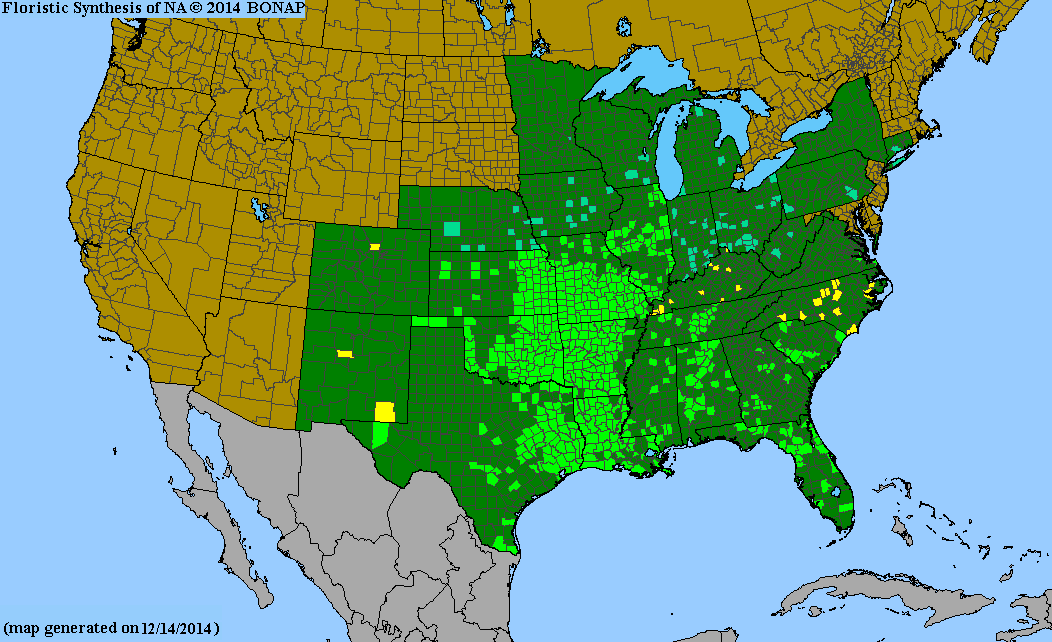 Map Color Key Map Color Key |
Texas Status: Native |
Banner photo of Castilleja indivisa and Lupinus ssp. taken along FM 1323 north of Johnson City, Blanco County
© Tom Lebsack 2025
Every attempt is made to provide accurate, up-to-date, and relevant information, but the completeness or accuracy of any information presented on this website cannot be guaranteed. I use authoritative references to insure high standards of accuracy and review and update the information frequently.
